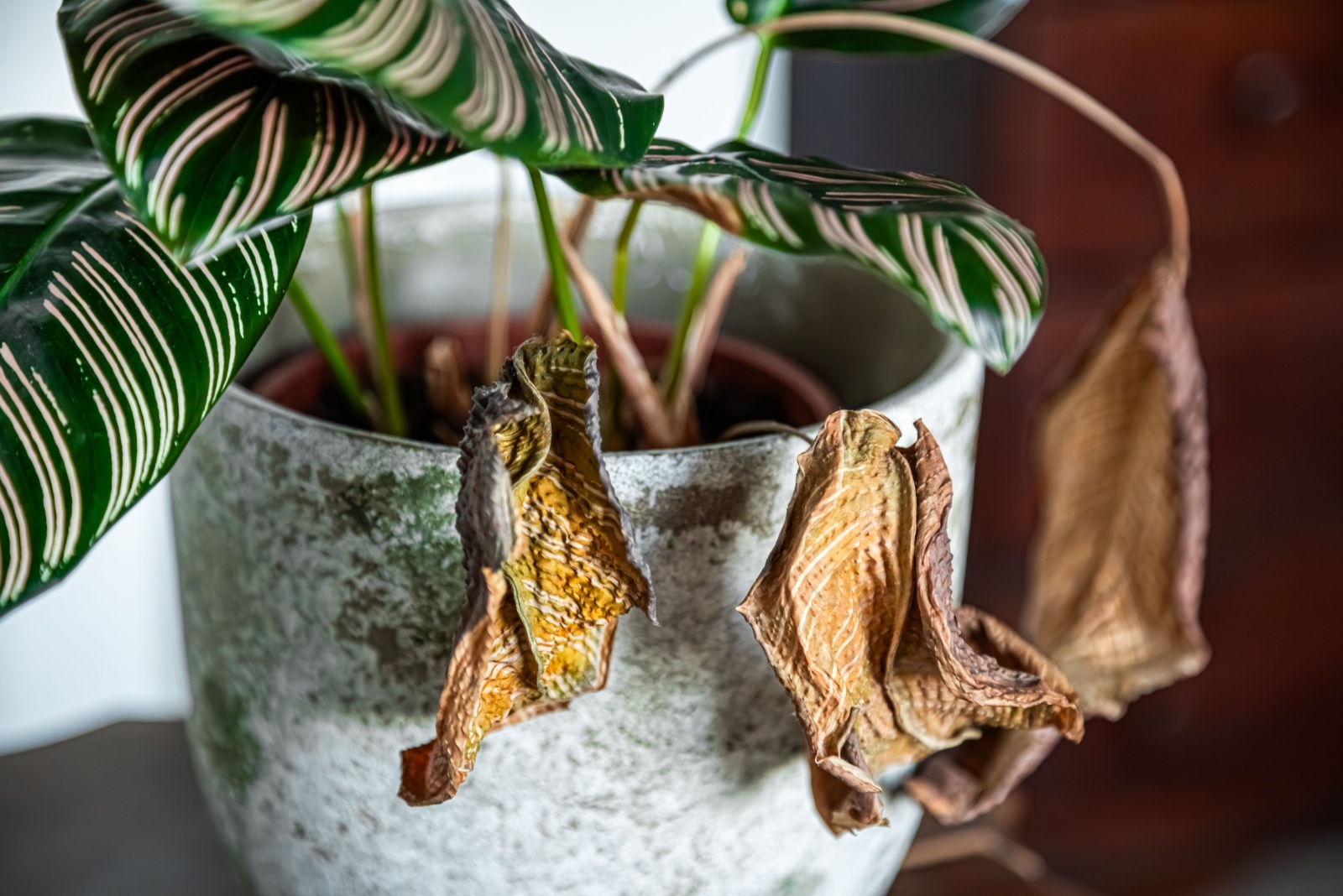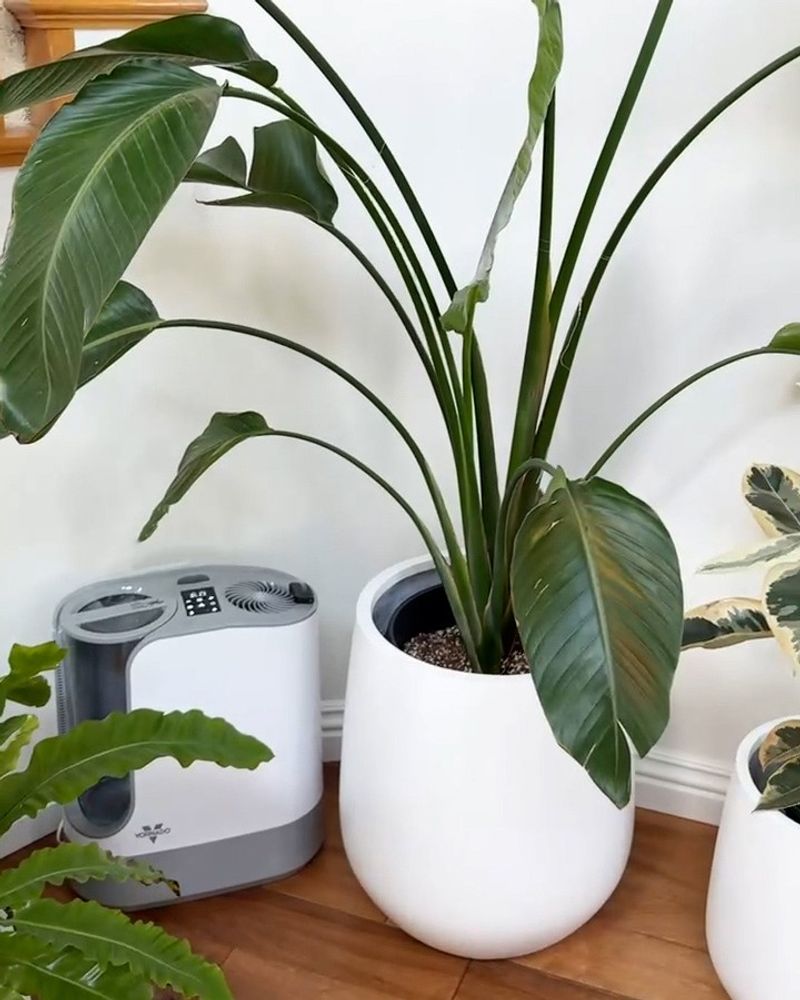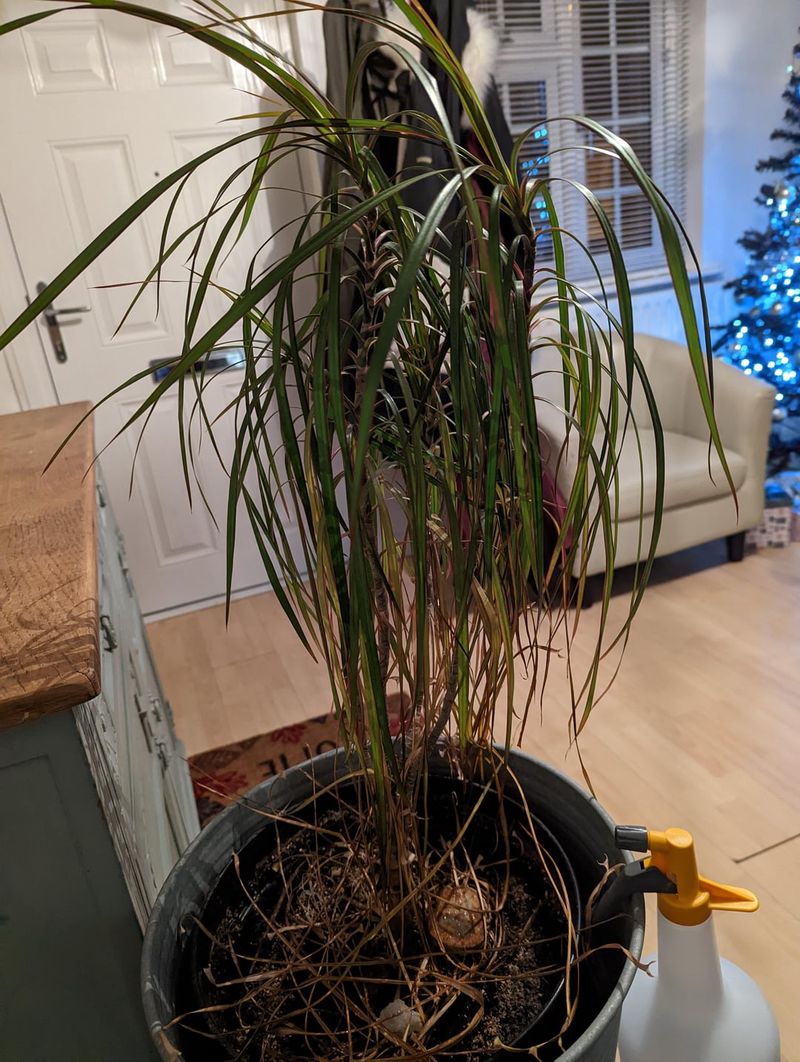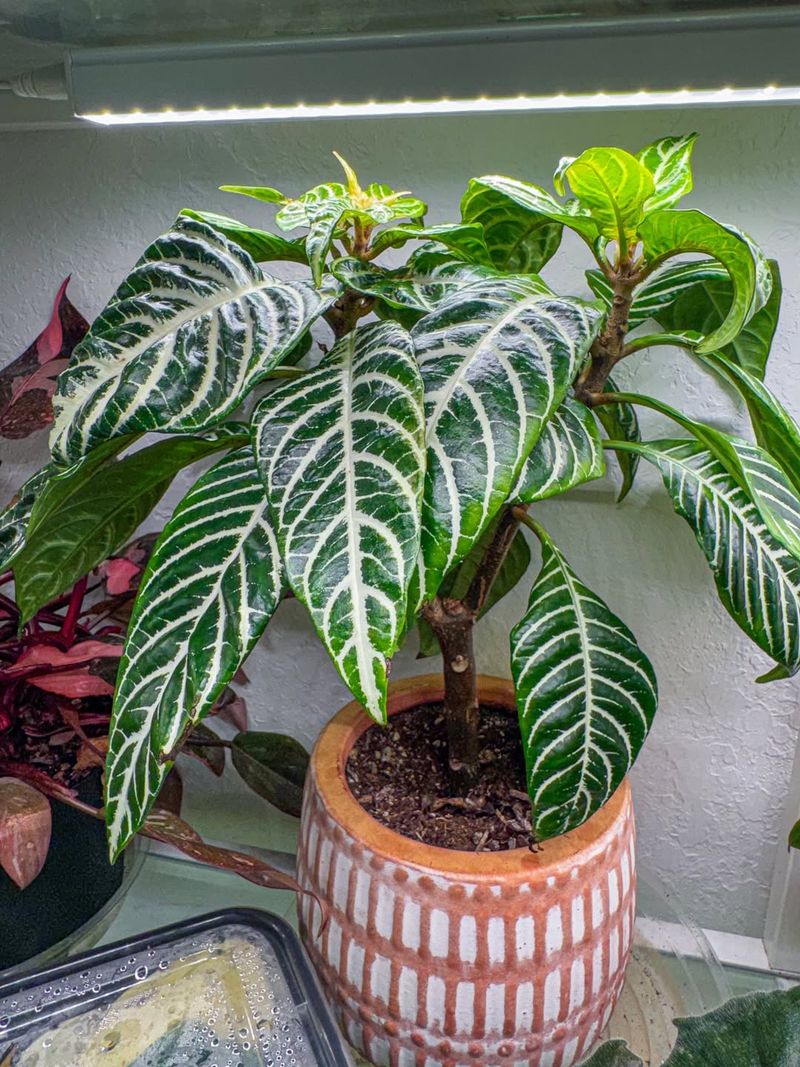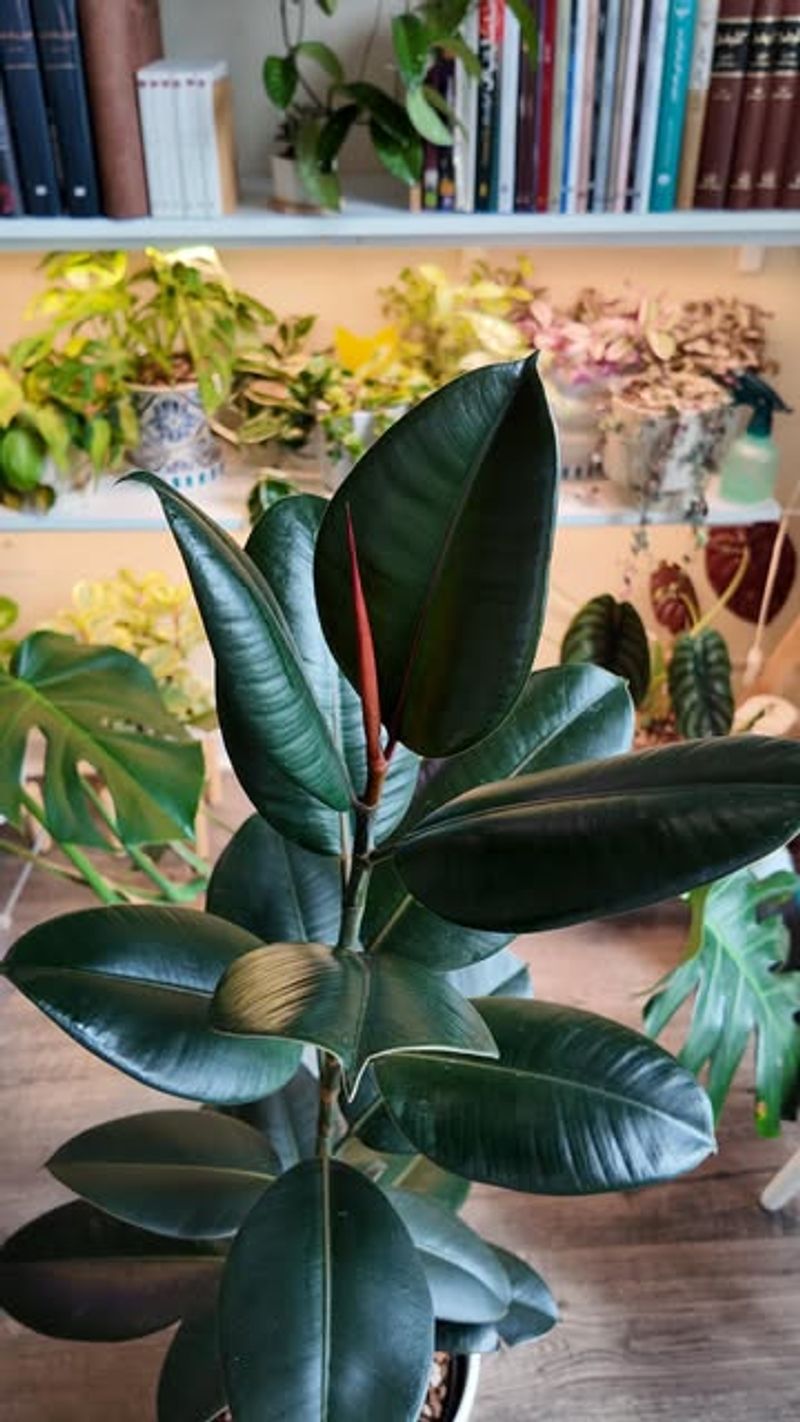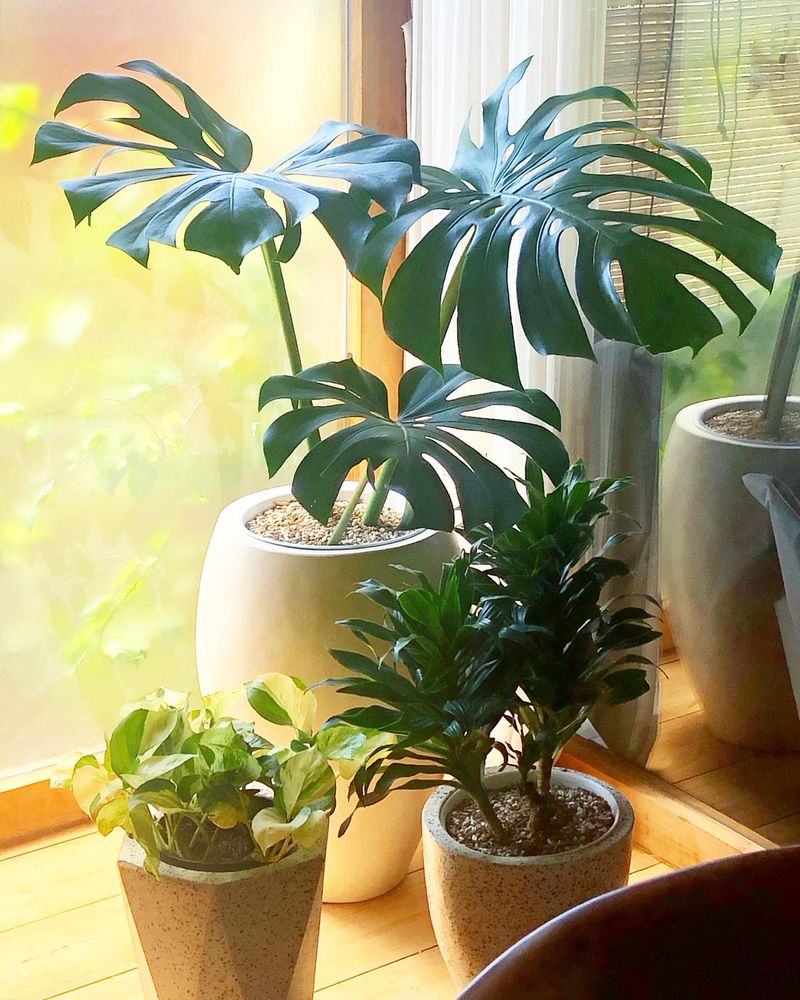Cold drafts glide through hallways, heaters kick on, and indoor air shifts so quickly that delicate foliage reacts with a dramatic slump.
Many apartment dwellers assume a major issue, yet the cause often hides in plain sight.
Short days, stale air, and uneven warmth create a perfect storm that exhausts houseplants by mid-month.
A small change in routine can revive them in surprising fashion.
Once that tweak takes place, leaves rise, colors sharpen, and tired plants spring back as if nothing happened.
Humidity Drops Drastically When Heating Systems Turn On
Most New York apartments blast the heat once December arrives, and that warmth comes with a hidden cost.
Indoor air becomes incredibly dry, often dropping below 20% humidity.
Your houseplants, which naturally thrive in environments with 40-60% humidity, suddenly feel like they’re living in a desert.
Plants lose moisture through their leaves faster than their roots can replace it.
This causes drooping, brown leaf tips, and overall sadness.
Spider plants, ferns, and tropical varieties suffer the most because they evolved in humid rainforest conditions.
The December fix works wonders here.
Adding a small humidifier near your plant collection can transform their environment overnight.
You can also group plants together so they create their own mini humidity zone through transpiration.
Another trick involves placing pots on trays filled with pebbles and water, ensuring the pot bottom stays above the waterline.
Misting helps temporarily but isn’t a long-term solution since moisture evaporates quickly.
Humidifiers provide consistent relief.
Many plant parents notice their droopy plants perk up within just a few days of increased humidity.
Investing in an inexpensive hygrometer lets you monitor moisture levels and adjust accordingly for healthier, happier houseplants all winter long.
Radiator Heat Creates Uneven Temperature Zones
Old-school radiators in classic New York buildings create hot and cold spots throughout your apartment.
Plants sitting too close to these heat sources experience temperature stress that leads to drooping and wilting.
Leaves near the radiator might even develop crispy edges while the rest of the plant looks fine.
Temperature fluctuations confuse plants because they can’t regulate their internal processes properly.
Roots might be cold while leaves are overheated, or vice versa.
Most houseplants prefer consistent temperatures between 65-75 degrees Fahrenheit.
Dramatic swings cause shock that manifests as drooping foliage.
The December fix involves relocating plants away from direct radiator exposure.
Move them at least three feet away from heat sources while ensuring they still receive adequate light.
Consider rotating plants weekly so all sides get equal warmth and light exposure.
You can also place a barrier like a decorative screen between radiators and plants to diffuse heat.
Some plant enthusiasts use thermal curtains to moderate temperature extremes near windows.
Checking soil temperature with your finger helps too—if it feels unusually warm or cold, relocate the plant.
Stable temperatures prevent stress and keep leaves perky throughout winter months in challenging apartment conditions.
Shorter Days Mean Less Natural Light Reaches Your Plants
December brings the shortest days of the year, with New York City getting barely nine hours of daylight.
Your south-facing window that bathed plants in sunshine during summer now provides weak, angled light.
Plants respond by slowing their growth and sometimes drooping because they’re not producing enough energy through photosynthesis.
Low light conditions force plants into a semi-dormant state.
They can’t maintain the same leaf structure and turgidity without adequate energy.
Varieties like pothos and snake plants tolerate low light better, but even they show stress.
Light-hungry plants like fiddle leaf figs really struggle and droop noticeably.
The December fix includes moving plants closer to windows or rotating them toward the brightest spots in your apartment.
South and west-facing windows work best during winter months.
Cleaning window glass removes grime that blocks precious sunlight.
Many New York plant parents invest in affordable grow lights to supplement natural illumination.
LED grow bulbs fit standard lamps and provide full-spectrum light that mimics sunshine.
Position lights 6-12 inches above foliage and run them for 12-14 hours daily.
Plants respond within weeks, straightening up and producing new growth.
Combining better light placement with artificial supplementation keeps your indoor garden thriving despite December’s darkness.
Watering Needs Change Dramatically During Winter Months
Many plant owners keep their summer watering schedule through December, not realizing their plants need much less water when growth slows.
Overwatering becomes a major problem because cold, dry air and reduced light mean plants absorb moisture more slowly.
Roots sitting in soggy soil can’t breathe properly, leading to root rot and drooping leaves.
Droopy plants often get more water from concerned owners, making the problem worse.
Overwatered plants and underwatered plants show similar symptoms—wilting and sad-looking foliage.
Checking soil moisture before watering prevents this common mistake.
The December fix requires adjusting your watering routine based on actual plant needs rather than a fixed schedule.
Stick your finger two inches into the soil—if it feels damp, wait to water.
Most houseplants need watering only every 10-14 days during winter compared to weekly during summer.
Well-draining soil helps prevent waterlogging.
Consider repotting plants in spring if their current soil stays soggy too long.
Bottom watering works great in winter because it prevents moisture from sitting on leaves in cold conditions.
Using room-temperature water prevents shocking roots.
Pay attention to each plant individually since different species have unique requirements.
Proper winter watering keeps roots healthy and leaves perky throughout the challenging December conditions in New York apartments.
Cold Drafts From Windows And Doors Shock Plant Systems
Windows in older New York buildings often have gaps that let icy December air seep inside.
Doors opening to hallways or fire escapes bring cold blasts that shock nearby plants.
Tropical houseplants especially hate sudden temperature drops because they evolved in stable, warm climates.
Cold drafts cause immediate drooping as plant cells contract and lose their firm structure.
Repeated exposure damages leaves permanently, causing brown spots and eventual leaf drop.
Plants positioned near drafty areas never quite look healthy because they’re constantly stressed.
The December fix starts with identifying problem areas.
Light a candle safely near windows and doors—flickering flames reveal air leaks.
Weather stripping and draft stoppers seal gaps effectively and inexpensively.
Moving plants away from drafty spots protects them from temperature shock.
Creating a buffer zone helps too.
Position furniture or decorative screens between plants and cold air sources.
Thick curtains provide insulation during nighttime when temperatures drop lowest.
Some plant lovers use bubble wrap on window glass for extra insulation without blocking light.
Check plants after opening doors or windows for ventilation—if they’re exposed to cold air frequently, relocate them permanently.
Stable temperatures allow plants to maintain their internal water pressure, keeping leaves upright and healthy-looking.
Protecting plants from drafts makes a noticeable difference in their winter appearance and overall vitality throughout the coldest months.
Dust Accumulation Blocks Light Absorption On Leaf Surfaces
New York City apartments get dusty fast, especially during winter when windows stay closed and heating systems circulate air constantly.
A thin layer of dust settles on plant leaves, creating a barrier that blocks sunlight from reaching the chlorophyll underneath.
Plants can’t photosynthesize efficiently, leading to weakness and drooping.
Dust also clogs the tiny pores called stomata that plants use for gas exchange and transpiration.
When stomata get blocked, plants struggle to breathe and regulate moisture, causing stress that shows up as wilted, droopy foliage.
Large-leafed plants like rubber trees and monstera show dust accumulation most obviously.
The December fix involves regular leaf cleaning as part of your plant care routine.
Wipe large leaves gently with a damp microfiber cloth every two weeks.
For plants with many small leaves, give them a lukewarm shower in your bathtub, letting water rinse away accumulated grime.
Avoid using leaf shine products because they can clog pores further.
Plain water works perfectly.
Some plant enthusiasts add a tiny drop of mild dish soap to their cleaning water for extra effectiveness.
Support leaves from underneath while wiping to prevent damage.
Clean leaves look shinier and healthier immediately.
More importantly, they can absorb maximum light and breathe properly, which translates to stronger, more upright growth.
Regular cleaning prevents the gradual decline that many New York plant owners notice as winter progresses.
Grouping Plants Together Creates A Beneficial Microclimate
Isolated plants scattered around your New York apartment each face harsh winter conditions alone.
When you group plants together, something amazing happens—they create their own little ecosystem.
Plants naturally release moisture through transpiration, and when multiple plants sit close together, they share this humidity and create a more favorable environment.
This microclimate effect mimics how plants grow in nature, surrounded by other vegetation rather than standing alone.
The shared humidity helps all the plants maintain better moisture levels in their leaves, reducing drooping and stress.
Grouped plants also provide each other with slight temperature buffering.
The December fix is simple—arrange your plant collection into clusters rather than spreading them throughout your apartment.
Place them on a large tray or plant stand where they can benefit from each other’s presence.
Mix different plant types and sizes for visual interest while maximizing the microclimate effect.
Position the group near a window for optimal light exposure, but away from radiators and drafts.
The collective mass of foliage creates a more stable environment that resists rapid humidity and temperature changes.
You’ll notice plants in groups stay perkier and healthier than solitary specimens.
This strategy works especially well for humidity-loving plants like ferns, calatheas, and prayer plants.
Grouping requires no special equipment or expense—just thoughtful arrangement.
Many New York plant enthusiasts report this simple change makes the biggest difference in their plants’ winter appearance and overall health throughout December and beyond.

